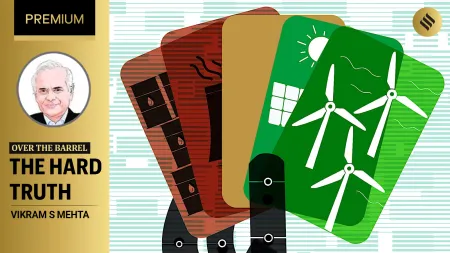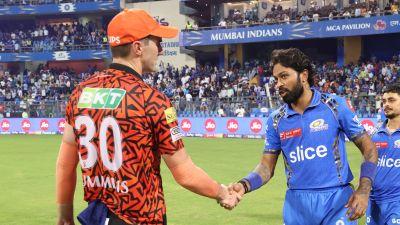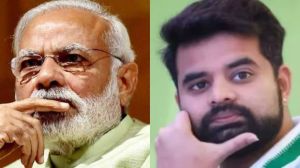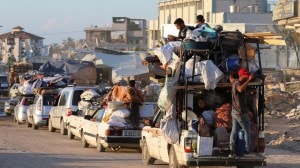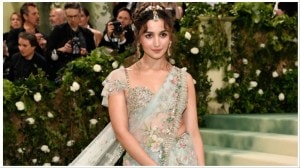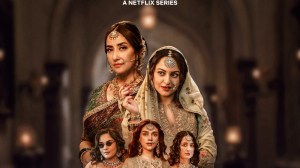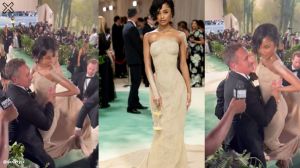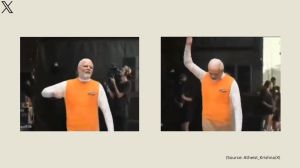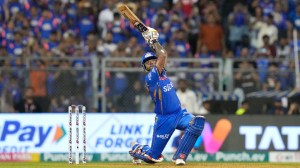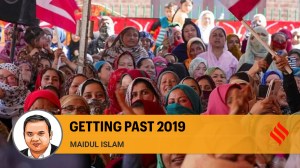- India
- International
Ukraine: A short history of its creation
Ukraine is in the east of Europe, and is bound by Russia to its northeast, east, and southeast, and the Black Sea in the south. In the southwest, west, and north, Ukraine shares borders, in the clockwise direction, with Moldova, Romania, Hungary, Slovakia, Poland, and Belarus.
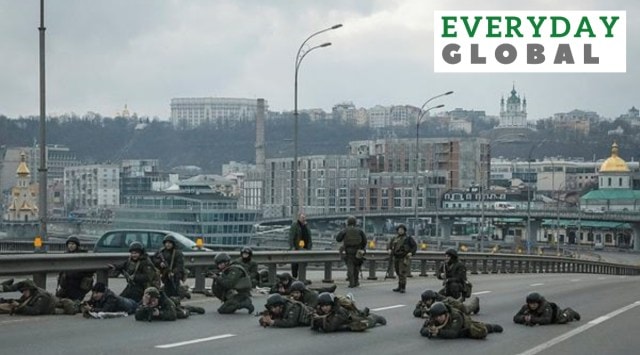 Servicemen of the Ukrainian National Guard take positions in central Kyiv, after Russia launched a massive military operation against Ukraine, February 25, 2022. (Reuters)
Servicemen of the Ukrainian National Guard take positions in central Kyiv, after Russia launched a massive military operation against Ukraine, February 25, 2022. (Reuters)Three days before he invaded Ukraine, President Vladimir Putin described Russia’s southwestern neighbour as a bogus country with no history, identity, or “stable traditions of real statehood”.
According to Putin, modern Ukraine was “entirely and fully created by Russia, more specifically the Bolshevik, communist Russia… This process began practically immediately after the 1917 revolution, and moreover Lenin and his associates did it in the sloppiest way in relation to Russia — by dividing, tearing from her pieces of her own historical territory”.
Area, demography, economy
Ukraine is in the east of Europe, and is bound by Russia to its northeast, east, and southeast, and the Black Sea in the south. In the southwest, west, and north, Ukraine shares borders, in the clockwise direction, with Moldova, Romania, Hungary, Slovakia, Poland, and Belarus.
It is the largest country in Europe after Russia itself, with an area of 603,550 sq km, or about 6% of the continent. Ukraine is, of course, dwarfed by Russia, which sprawls over almost 4 million sq km and 40% of Europe.

In July 2021, Ukraine’s population was estimated at 43.7 million. Of this, 77.8% was of Ukrainian ethnicity and 17.3% was Russian, and Ukrainian and Russian speakers made up 67.5% and 29.6% of the population respectively (2001 estimates, CIA World Factbook).
The Russian speakers live mostly in the east, close to the border with Russia, where the Russian government, after encouraging and sustaining an armed insurgency for eight years, this week recognised two independent republics, signalling the inevitable war that followed.
Ukraine is the poorest country in Europe in terms of gross domestic product and gross national income per capita. It has deposits of iron ore and coal, and exports corn, sunflower oil, iron and iron products, and wheat.
India is Ukraine’s largest export destination in the Asia Pacific region. The country’s major export to India is sunflower oil, followed by inorganic chemicals, iron and steel, plastics, and chemicals. Ukraine’s major import from India is pharmaceutical products.
Early history of Ukraine
A millennium ago, what is Ukraine today lay at the heart of the Kyivan Rus’ (Rus’ land), a federation of the East Slavic, Baltic, and Finnic peoples of eastern and northern Europe, with its capital in Kyiv. Modern Ukraine, Russia, and Belarus all trace their cultural ancestry to the Kyivan Rus’.
The Kyivan Rus’ reached ts greatest size and power in the 10th and 11th centuries. In 988 AD, the Grand Prince of Kyiv, Vladimir (Volodymyr) the Great, made Christianity the state religion. The peak of the Kyivan Rus’ came under Yaroslav the Wise, who ruled from 1019-54.
In the mid-13th century, the Kyivan Rus’, weakened by the decline of trade as the Byzantine Empire collapsed, fell apart under the onslaught of the Mongol Golden Horde, who sacked Kyiv in 1240. After the Mongol khanate disintegrated in the early 15th century, however, large parts of the former Kyivan Rus’ were incorporated into the multi-ethnic Grand Duchy of Lithuania.
By the Union of Lublin, Poland, in 1569, the Crown of the Kingdom of Poland and the Grand Duchy of Lithuania came together to form the Polish-Lithuanian Commonwealth, which was among Europe’s biggest countries at the time. The beginnings of the modern Ukrainian national identity can be traced back to about a century after this event.
Incorporation into Russia
In 1648, Cossacks under Hetman Bohdan Khmelnytsky rose in revolt against the Poles, took control of Kyiv, and founded the Ukrainian state of Cossack Hetmanate in the area that is today’s central Ukraine. After about a century, however, Empress Catherine the Great (1762-96) of Russia abolished the hetmante, and absorbed the entire ethnic Ukrainian territory into the Russian Empire.
The Tsarist policy of Russification led to the suppression of ethnic identities and languages, including that of the Ukrainians. Within the Russian Empire though, many Ukrainians rose to positions of prosperity and importance, and significant numbers migrated to settle in other parts of Russia.
More than 3.5 million Ukrainians fought in World War I on the side of the Russian Empire, but a smaller number fought against the Tsar’s army with the Austro-Hungarians.
Ukraine as part of USSR
The war led to the end of both the Tsarist and Ottoman empires. As a mainly communist-led Ukrainian national movement emerged, several small Ukrainian states sprang up. Months after the Bolsheviks took power in the October Revolution of 1917, an independent Ukrainian People’s Republic was proclaimed, but a civil war continued between various claimants to power, including Ukrainian factions, anarchists, Tsarists, and Poland. In 1922, Ukraine became part of the Union of Soviet Socialist Republics (USSR).
After the Soviet collapse
In 1991, the USSR was dissolved. Demands for independence had been growing in Ukraine for a couple of years previously, and in 1990, over 300,000 Ukrainians created a human chain in support of freedom, and the so-called Granite Revolution of students sought to prevent the signing of a new agreement with the USSR.
On August 24, 1991, after the failure of the coup to remove President Mikhail Gorbachev and restore the communists to power, the parliament of Ukraine adopted the country’s Act of Independence. Subsequently, Leonid Kravchuk, head of the parliament, was elected Ukraine’s first President.
In December 1991, the leaders of Belarus, Russia, and Ukraine formally dissolved the Soviet Union and formed the Commonwealth of Independent States (CIS). However, Ukraine’s parliament, the Verkhovna Rada, never ratified the accession, so Ukraine was legally never a member of the CIS.
Newsletter | Click to get the day’s best explainers in your inbox
More Explained
EXPRESS OPINION
May 07: Latest News
- 01
- 02
- 03
- 04
- 05






